Herbal Compound Butters for Festive Feasting
Recipes and Photography by Sarah Snyder
Other text by Juliet Blankespoor & Meghan Gemma
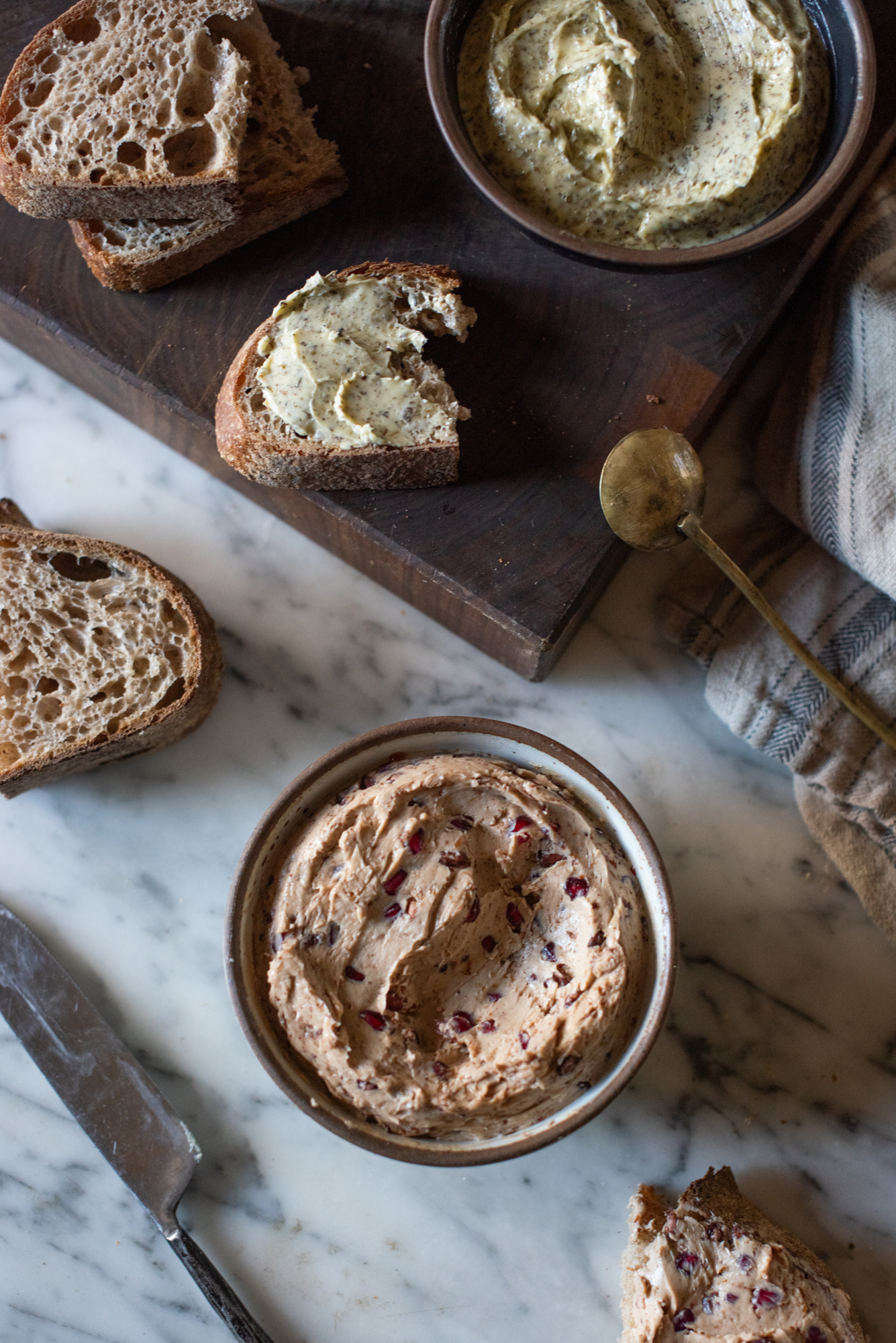
Flavored culinary butters add thrill to any cuisine.
Rich and sultry, compound butters generously lend a delectable flavor and silky texture to almost any dish. They can be slathered onto baked roots, fresh bread, and crackers or used to roast veggies or meat. Fruity, sour, and sweet butters are delicious with pancakes, muffins, or waffles. When you set the table with buttery herbal spreads, every occasion instantly feels special—from Sunday brunch to your best friend’s birthday dinner.
Despite compound butter’s stodgy-sounding name (borrowed from the French, beurre composé), flavored butters reliably add thrill to any cuisine. You may be familiar with compound butters if you’ve ordered steak at a swanky restaurant. After grilling meat or fish, the chef melts a melon ball-sized pat of compound butter on top, the flavor percolating in a pool of lavishness.
Compound butters can be frozen, giving you an elegant method of preserving fresh culinary herbs, especially those that don’t dry well like chives, cilantro, or parsley. Use the butter immediately or roll into logs, wrap in wax paper, and freeze for later use. Simply slice off a round when you’re ready to use the butter, or thaw out smaller portions to have on hand in the refrigerator.
If you avoid dairy, try one of the many non-dairy “butters” or, for a sweet butter, try coconut manna. These plant alternatives will have a different consistency than butter—you might not be able to roll them into a log, and instead, can serve them in a small bowl.
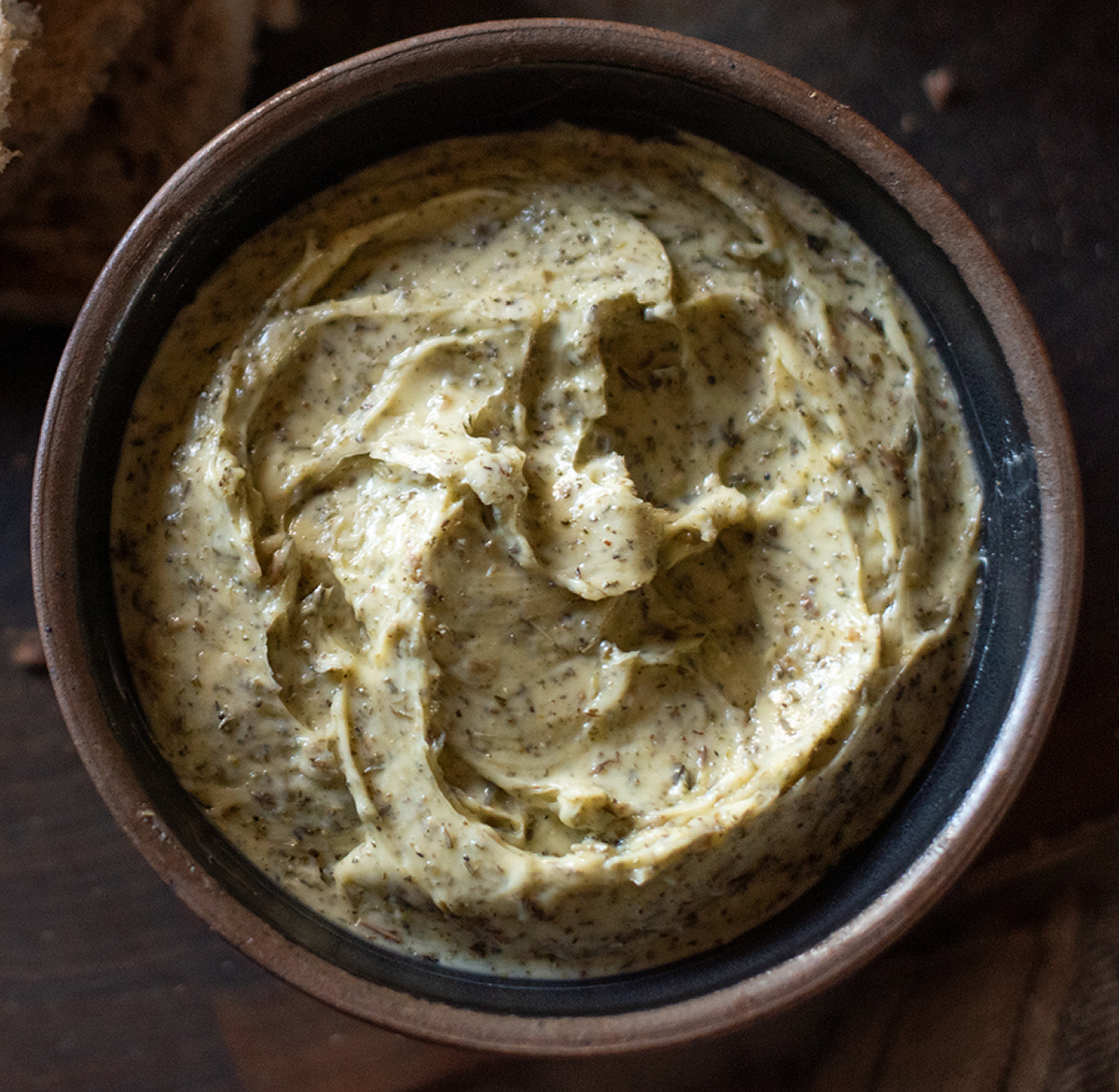
A bowl of Herbes de Provence herbal compound butter.

Herbes de Provence Herbal Butter
Equipment
- Mixing bowl
- Sturdy spoon
Ingredients
- 1 cup salted butter (1 cup = 2 sticks butter)
- 2 teaspoons dried thyme
- 2 teaspoons dried sage
- 2 teaspoons dried lavender
- 1 teaspoon dried basil
- 1 teaspoon dried tarragon
- 1 teaspoon dried oregano
Instructions
- Bring the butter to room temperature.
- Add all the ingredients to a bowl and mix with a sturdy spoon until combined.
- Store in the refrigerator or freeze for later.
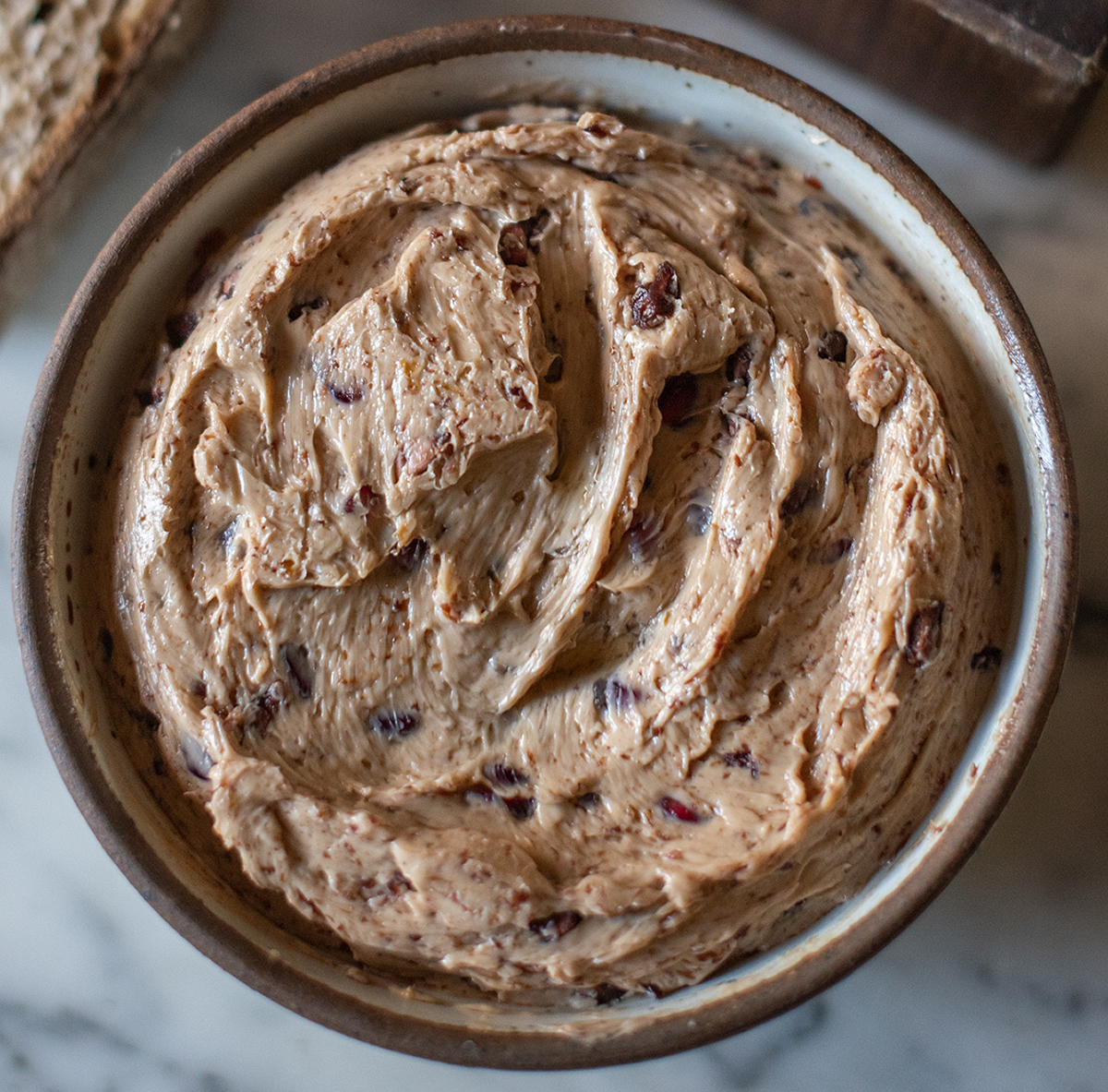
A bowl of pomegranate molasses compound butter.
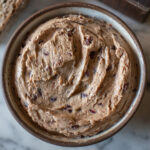
Pomegranate Molasses Butter
Equipment
- Mixing bowl
- Sturdy spoon
- Strainer
Ingredients
- 1 cup salted butter (1 cup = 2 sticks butter)
- 1 pomegranate
- 1 teaspoon grated fresh ginger
- 1 teaspoon orange zest
- 1 teaspoon molasses
Instructions
- Bring the butter to room temperature.
- Peel the pomegranate and separate the seeds.
- Leave half of the pomegranate seeds whole.
- Chop the remaining half of the pomegranate seeds and drain the excess juice using a strainer.
- Add all the ingredients, including whole and chopped pomegranate seeds, to a bowl and mix with a sturdy spoon until combined.
- Store in the refrigerator or freeze for later.
Learn more about the ingredients
For information on the medicinal benefits of herbs featured in these compound butter recipes, visit our articles on:
Basil
Basil (Ocimum basilicum) is best known for its culinary uses, but it is also a versatile medicinal. Learn more about basil.
Lavender
Lavender (Lavandula angustifolia) supports healthy digestion and soothes the nervous system. Learn more about lavender.
Sage
Garden Sage (Salvia officinalis) & White Sage (Salvia apiana) are versatile medicinal & antimicrobial herbs. Learn more about sage.
Looking for more feast-worthy recipes?
Try making our Hibiscus Chutney—it’s the ultimate herbal twist on cranberry sauce—and these show-stopping Herbal Finishing Salts (see pic below).
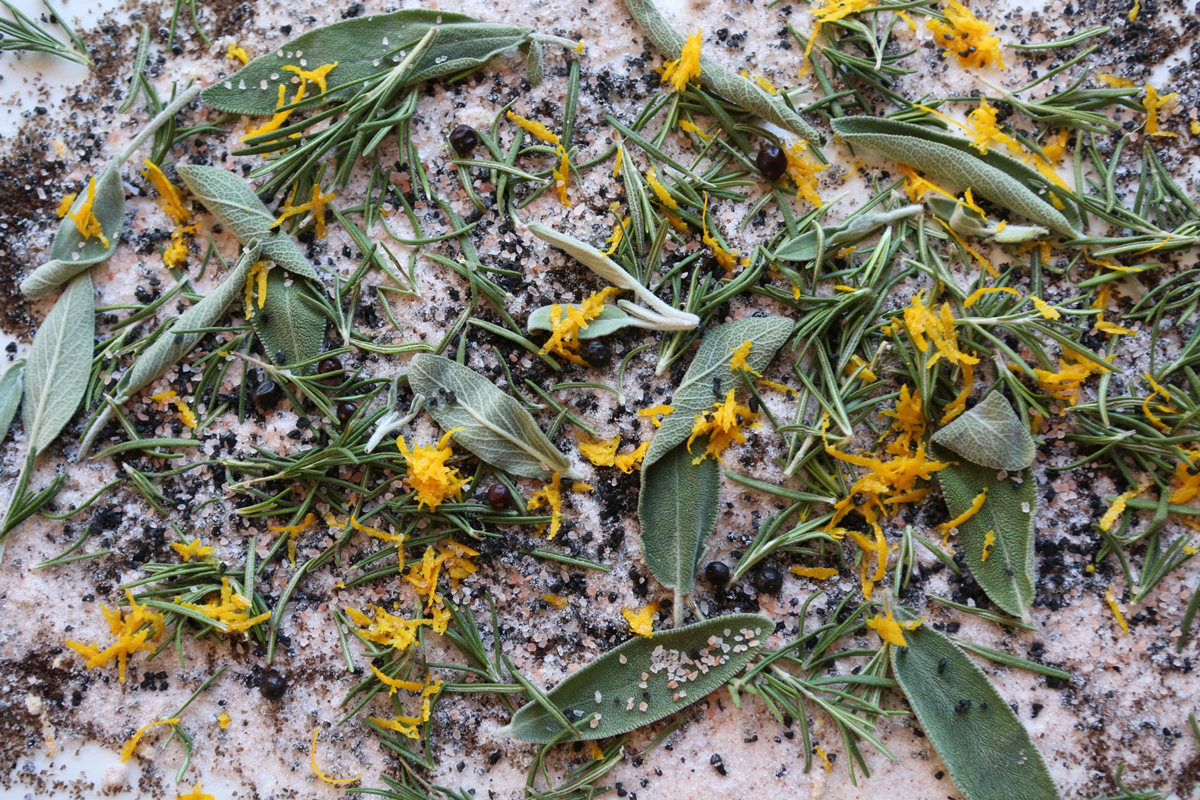
A close up of herbal finishing salt made from fresh sage, rosemary, orange zest, and juniper berries.
Meet Our Contributors:
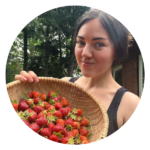
SARAH SNYDER grew up in a small wooded town outside of Charlotte, NC. She studied music in college before moving to Asheville, NC to study pastry arts. Here she developed a love for plants, gardening, medicine-making, and homesteading. She has worked as a photographer, pastry chef, journalist, and social media manager.
Most days you can find her reading with her dog and a mug of tea, getting the perfect shot of her garden, trying out yet another craft, or wrangling chickens back into the yard.

JULIET BLANKESPOOR is the founder, primary instructor, and Creative Director of the Chestnut School of Herbal Medicine, an online school serving thousands of students from around the globe. She's a professional plant-human matchmaker and bonafide plant geek, with a degree in botany and over 30 years of experience teaching and writing about herbalism, medicine making, and organic herb cultivation. Juliet’s lifelong captivation with medicinal weeds and herb gardening has birthed many botanical enterprises over the decades, including an herbal nursery and a farm-to-apothecary herbal products business.
These days, she channels her botanical obsession through her writing and photography in her online programs, on her personal blog Castanea, and in her new book, The Healing Garden: Cultivating and Handcrafting Herbal Remedies. Juliet and her family reside in a home overrun with houseplants and books in Asheville, North Carolina.

MEGHAN GEMMA is one of Chestnut School of Herbal Medicine's primary instructors through her written lessons, sharing herbal and wild foods wisdom from the flowery heart of the school to an ever-wider field of herbalists, gardeners, healers, and plant lovers.
She began her journey with the Chestnut School in 2010—as an intern and manager at the Chestnut Herb Nursery and then as a plant-smitten student “back in the day” when the school’s programs were taught in the field, and later she became part of the school’s writing team. Meghan lives in the Ivy Creek watershed, just north of Asheville, North Carolina.
Interested in becoming a contributor?
© Chestnut School of Herbal Medicine and chestnutherbs.com, 2011-2025. Unauthorized use and/or duplication of this material without express and written permission from this site’s author and/or owner is strictly prohibited. Excerpts and links may be used, provided that full and clear credit is given to Chestnut School of Herbal Medicine and chestnutherbs.com with appropriate and specific direction to the original content.
Want to take a deeper dive into medicinal herbs and their uses?
Our 1,000-hour Herbal Immersion Program is the most comprehensive handcrafted online herbal course available, covering botany, foraging, herb cultivation, medicine making, and therapeutics.
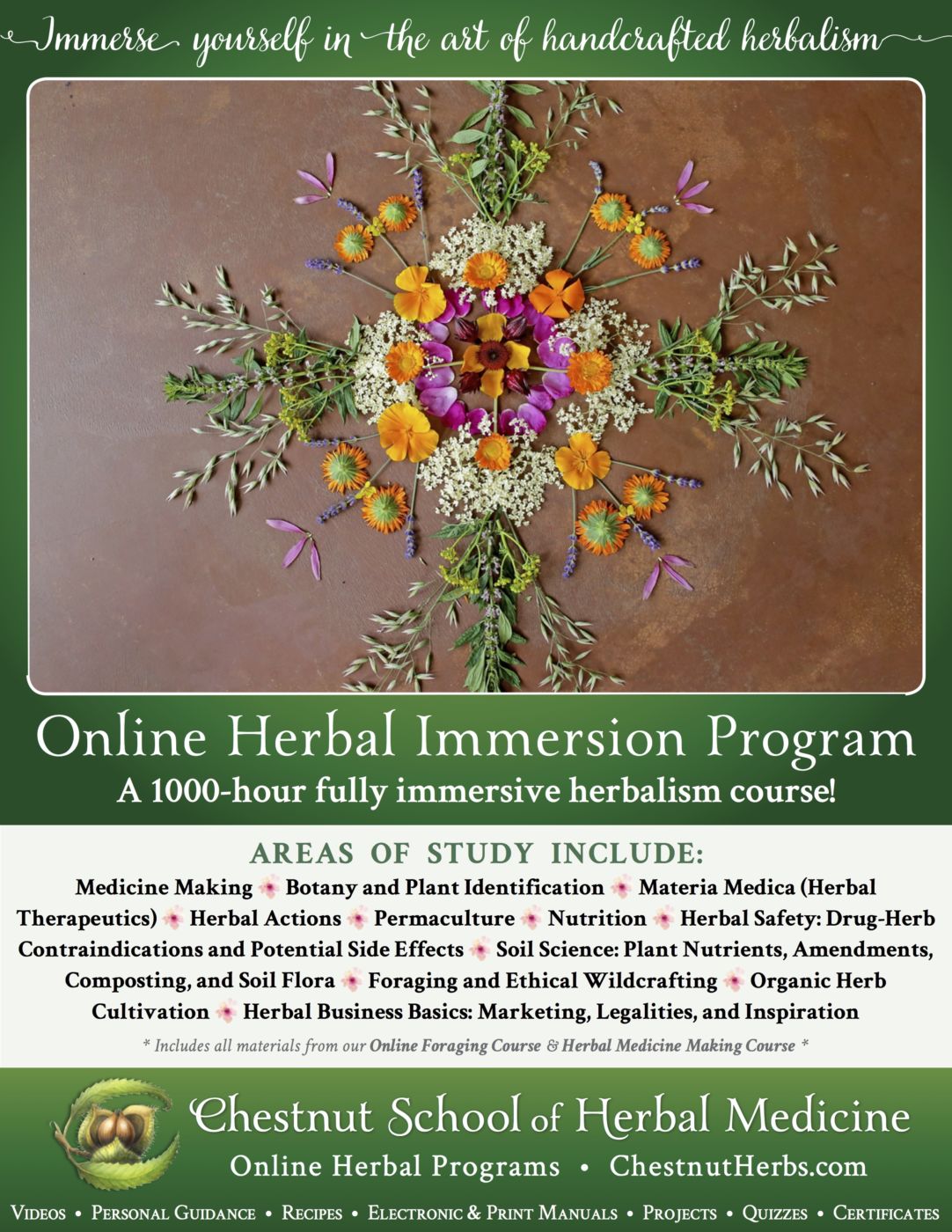
The post Herbal Compound Butters for Festive Feasting appeared first on Chestnut School of Herbal Medicine.

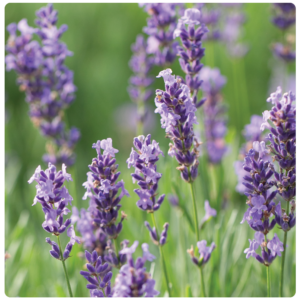
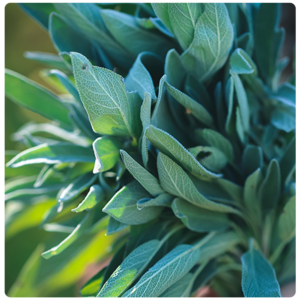
Leave a Reply